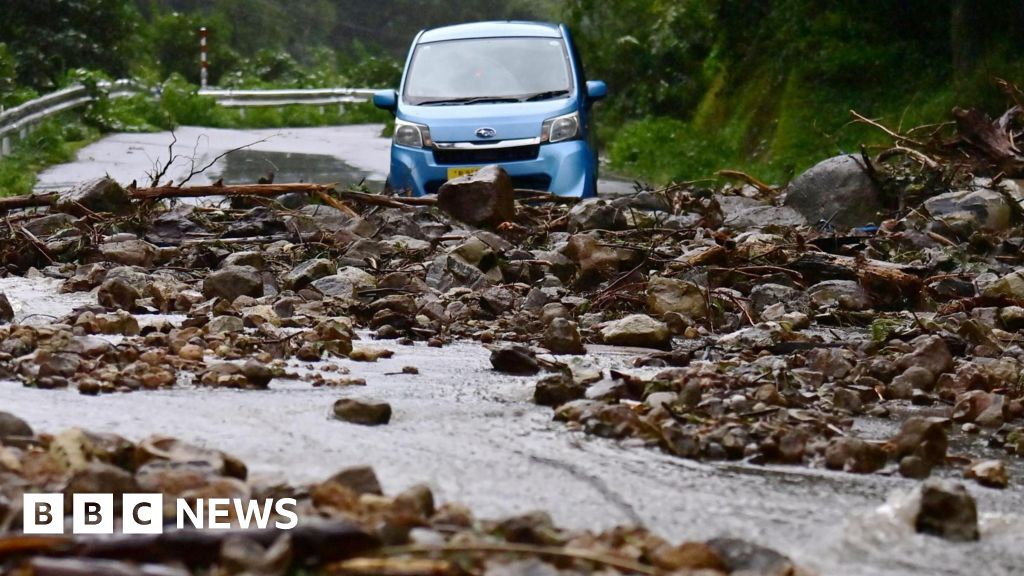One person has been confirmed dead and several others remain missing due to the flooding and landslides that have ravaged Ishikawa Prefecture in Suzu, Wajima and Noto, Japan.

Also Read: Africa Floods: Over 4 Million People Affected
The deceased individual was located in Suzu, where they were swept away by floodwaters. At least seven people are unaccounted for across the region with a portion of these individuals having been caught in landslides or washed away by overflowing rivers.
Among the missing are workers who were conducting road repairs to restore infrastructure damaged by the region’s New Year’s Day earthquake.
The Japan Meteorological Agency raised its highest alert level for the Ishikawa region. The alert indicated that the intensity of rainfall and potential for landslides and flooding made the situation extremely dangerous.
A mandatory evacuation order was issued to over 40,000 residents, encompassing the cities of Wajima, Suzu and Noto, urging people to leave their homes and seek safety in designated shelters.
This alert affected several other northern prefectures including Niigata and Yamagata, where an additional 16,000 residents were also instructed to evacuate due to the danger posed by the floods.
At least 16 rivers in the Ishikawa region have burst their banks leading to flooding in low-lying areas. This caused rivers to overflow and water to inundate entire neighborhoods, trapping residents in their homes.
Power outages have affected approximately 6,000 households with the affected areas lacking not only electricity but also running water in some instances.
Key infrastructure such as roads and bridges has been impacted with some roads completely blocked by landslides and muddy water. Rescue workers have encountered challenges in reaching certain areas due to these blocked routes.
Four of the missing individuals were workers involved in repairing roads damaged by the 7.6 magnitude earthquake that struck on January 1, 2024. These workers were caught in a landslide while repairing a tunnel in Wajima. This earthquake killed at least 236 people.
According to JMA data, Wajima saw over 120mm of rain on the morning of September 21, 2024, a new record for the region. This is the highest recorded rainfall in the area since weather records began.
The rain is not expected to subside until midday on Sunday. JMA officials have warned that up to 20cm of additional rain could fall over the next 24 hours due to persistent rain bands.
Sugimoto Satoshi, a JMA forecaster stated that the region has never experienced this level of rainfall before, calling for residents to immediately prioritize their safety.
Also Read: Hoiho Penguin Wins New Zealand’s 2024 Bird of the Year
The combination of steep terrain and torrential rains has made landslides a threat across Ishikawa. Entire streets in cities like Wajima and Suzu have been buried under debris.
Images aired by NHK, Japan’s public broadcaster showed streets submerged under water, houses destroyed and vehicles abandoned in floodwaters.
In some cases, residents had to wade through waist-high water to escape from submerged areas. Koji Yamamoto, a local government official confirmed that 60 people were working on road repairs in Wajima when a landslide struck, but contact with four workers has been lost.
The Japanese government has mobilized resources to assist in the crisis. Chief Cabinet Secretary Yoshimasa Hayashi addressed that the government is putting the lives of people first with immediate efforts focused on search and rescue operations.
Japan’s Self-Defense Forces have been deployed to assist local authorities in Ishikawa, joining rescue teams in efforts to reach isolated communities and missing persons.
Prime Minister Fumio Kishida has instructed his government to remain vigilant and proactive in disaster response efforts, stressing that local governments must collaborate with meteorological agencies to monitor developments and update evacuation orders as needed.
Over the last 24 hours, heavy rain has poured over the Noto Peninsula. Cities like Wajima and Suzu have received more than 400 mm and 300 mm of rainfall.
At least 16 rivers in the Ishikawa Prefecture including those in Suzu and Wajima, have breached their banks leading to flooding. The Ministry of Land and Infrastructure has advised residents to use maximum caution when navigating areas near rivers or steep hills.
Landslides have caused damage across the region, blocking access roads and isolating villages. NHK footage has shown homes tilted and torn apart by landslides.
The tropical depression evolved from Typhoon Pulasan, has been a factor behind the unstable atmospheric conditions in the region. As the system moved northeast over the Sea of Japan, it brought with it warm and humid air.
Rescue teams continue to search for at least 10 missing people. Helicopters, boats and rescue vehicles have been dispatched, but landslides and flooded roads have slowed down operations.
Also Read: Seasteading News: Recent Updates and Major Floating City Projects in 2024























